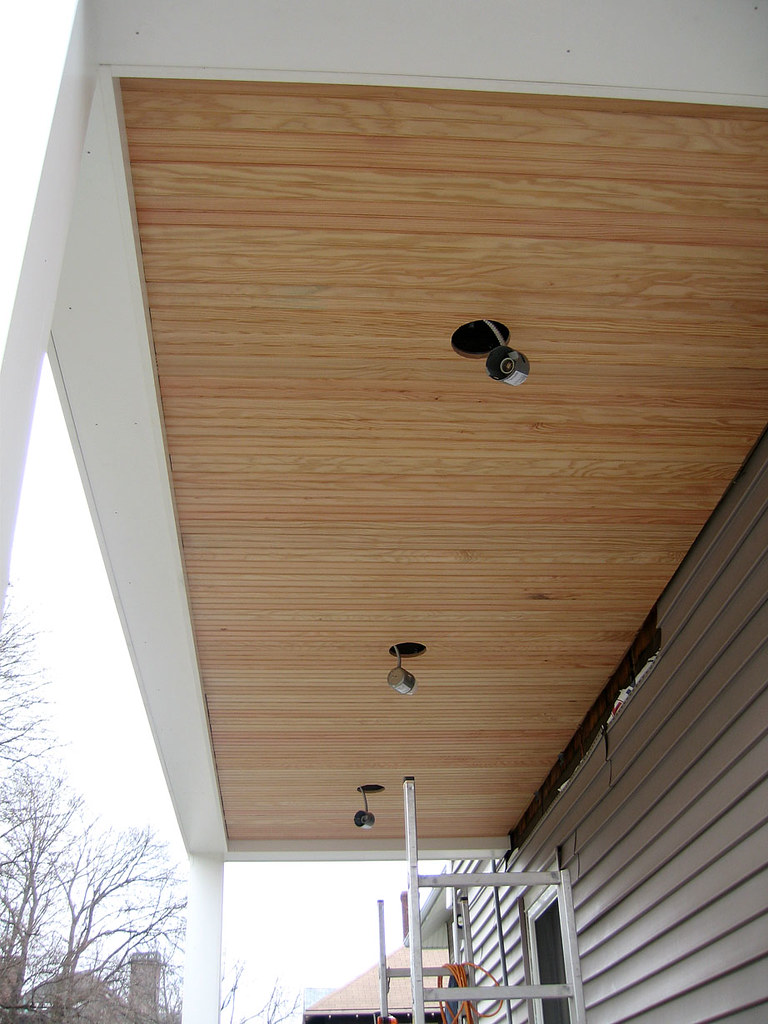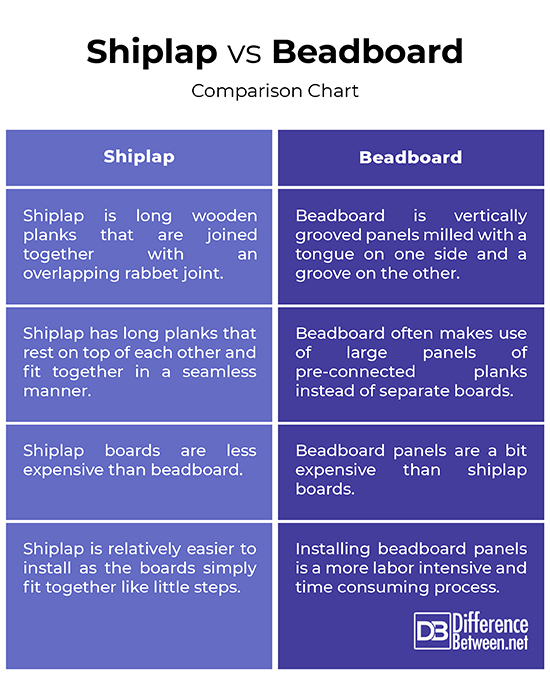Difference Between Shiplap and Beadboard
Ever noticed the spots or damp patches on the walls inside your home? Or the rising damp on your ceilings bothers you? Well, if it does, you’re not alone. Wet spots and moisture-ridden walls are very common these days because most of the commercial establishments were probably built without appropriate damp proofing. You can clean some of the spots on the walls without much hassle, but some of the blemishes are almost impossible to get rid of. Normally, you’d ask for an expert in damp-proofing, but if that’s too much for you, there’s an alternate solution – wood paneling. Well, walls that are in poor condition, except the very bad ones, can be covered with wood paneling, which not only gets the job done but also fits well into the modern space. When it comes to interior wood cladding, the two most popular choices are shiplap and beadboard. So, what are they and which one’s better?

What is Shiplap?
Shiplap is a kind of wooden board originally used to waterproof ships (hence the name) and now finds its use in a wide variety of interior design elements, particularly wall paneling. It was traditionally used on the exterior of the buildings as an inexpensive way for cladding. Characterized by long planks, shiplap is a type of wooden wall sliding that features an overlapping rabbet joint creating a 90-degree gap which makes it lap over the next piece of board. The key to a good shiplap is to make sure the adjoining parts, such as the mating tongue and rabbet are of same thickness, so that the joint fits well. It was widely used in barns and cottages for cladding purposes to protect against the weather elements. They can be either placed vertically or horizontally to prevent any natural elements like wind or water from seeping in. Today, they are commonly used for home renovation projects in accent walls, ceilings, flooring, etc.

What is Beadboard?
Beadboard is a kind of wood paneling characterized by narrow wooden planks with raised beads spaced every inch or two. It’s like a sheet of wood with grooves on it and typically used on walls and ceilings for decorative purposes. Like other common building materials, beadboard is versatile enough to be used just anywhere in your home and it packs a mean decorative punch. They used to come in a wide range of styles and sizes. Even today, it goes by many names; In fact, in some countries, it’s called wainscoting. Today, it’s just another decorative woodwork panel, like the tongue and groove paneling, which can be installed vertically or horizontally on the entire walls or parts of it. Beadboards are commonly used as a full or partial wall-covering in kitchens and bathrooms, where the moisture tends to take a toll on the walls. The beauty of beadboard is its versatility and its customization capability to suits every project.
Difference between Shiplap and Beadboard
Joint
– While both shiplap and beadboard are the two most popular choices in interior paneling woodworks, they are not the same. The main difference between the two is how the boards connect. Shiplap is characterized by long wooden planks that are joined together with an overlapping rabbet joint, creating a 90-degree gap between the top and bottom of adjoining boards. Beadboard, on the other hand, features vertically grooved panels that are milled with a tongue on one side and a groove on the other so that the boards fit together.
Style
– Shiplap has long planks that rest on top of each other and overlap, and they are typically mounted horizontally to create a weatherproof sealing. There is a slight gap between the boards which are prone accumulating dust. Shiplap comes in a variety of materials, from inexpensive pine planks to plywood, wood, and cedar. Beadboard, on the other hand, comes in long, monolithic sheets that resemble a traditional tongue-and-groove paneling, and unlike shiplap, they are installed in large sections with glue and nails.
Installation
– Tongue and groove planks like beadboard are really good but they are a bit expensive, time consuming and labor intensive, when it comes to their installation. While they both look fairly similar when installed, the difference lies in their ease of installation. Shiplap is undoubtedly easy to install as the boards simply fit together like little steps and notch on their adjacent boards. After that, a nail straight through the overlap and you’re good to go. Today, beadboard also comes in easy-to-install sheets, instead of separate boards.
Shiplap vs. Beadboard: Comparison Chart

Summary
While both shiplap and beadboard are excellent choices to add stylish fair and visual touch to your home, they are different styles of wood paneling with distinctive characteristics. One of the major differences between the two is the way they connect; shiplaps panels feature interlocking joints that allow the planks to rest on top of each other seamlessly, whereas beadboard uses strips of wooden boards that are joined together with a tongue-and-groove joint. Although, beadboard is more versatile, they are more expensive and labor intensive and time consuming, when it comes to installation. Shiplap boards are fairly easy to install as the planks simply interlock with their adjacent planks.
- Difference Between Caucus and Primary - June 18, 2024
- Difference Between PPO and POS - May 30, 2024
- Difference Between RFID and NFC - May 28, 2024
Search DifferenceBetween.net :
Leave a Response
References :
[0]Chan, Yeung. Classic Joints with Power Tools. New York, United States: Sterling Publishing, 2002. Print
[1]Sherwood, Gerald E. and Robert C. Stroh. Wood-Frame House Construction. Massachusetts, United States: Courier Corporation, 2012. Print
[2]Jackson, Albert and David Day. Popular Mechanics Complete Home How-to. New York, United States: Sterling Publishing, 2009. Print
[3]Elpel, Thomas J. Living Homes: Integrated Design & Construction. Montana, United States: HOPS Press, 2005. Print
[4]Hand, Justin. “Remodeling 101: The Ultimate Guide to Shiplap, Beadboard, and V-Groove Paneling.” Remodelista, Remodelista, LLC., remodelista.com/posts/remodeling-101-shiplap-beadboard-v-groove-paneling/. Accessed 28 May 2021.
[5]Image credit: https://live.staticflickr.com/114/300581894_0dd23aa5c2_b.jpg
[6]Image credit: https://live.staticflickr.com/4406/36540892063_54f27662bf_b.jpg
